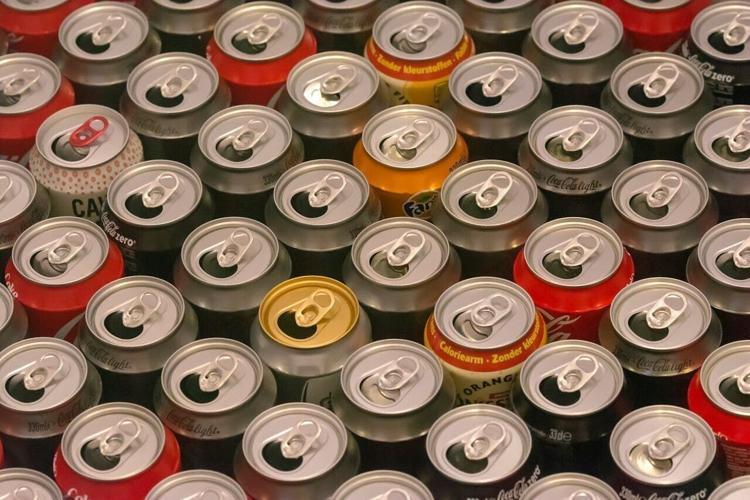
(Photo by Jan van der Wolf via Pexels)
By Stephen Beech
Sugary and artificially sweetened drinks both increase the risk of liver disease, suggests a new study.
Sugar-sweetened beverages (SSBs) and low- or non-sugar-sweetened beverages (LNSSBs) are "significantly associated" with a higher risk of developing the potentially deadly problem, according to the findings.
People should switch to drinking water instead, say scientists.
The study involved 123,788 participants in the UK Biobank database who didn't have liver disease at the outset.
Consumption of drinks was assessed using repeated 24-hour dietary questionnaires.
Researchers examined the associations between SSB and LNSSB intake and the risks of developing metabolic dysfunction-associated steatotic liver disease (MASLD), liver fat accumulation and liver-related mortality.
A higher intake of both LNSSBs and SSBs - classified as more than 250g per day - was associated with a 60% and 50% elevated risk of developing MASLD, respectively.

(Photo by Nothing Ahead via Pexels)
Over the average 10.3-year follow-up period, 1,178 participants developed MASLD while 108 died from liver-related causes.
While no significant association was observed for SSBs, LNSSB consumption was also linked to a higher risk of liver-related death.
Both types of drinks were also positively associated with higher liver fat content.
MASLD - formally known as non-alcoholic fatty liver disease (NAFLD) - is a condition where fat accumulates in the liver, which can cause hepatitis and symptoms such as pain, fatigue and loss of appetite.
The disease has emerged as a global health burden since being recognised as the most common chronic liver disease, with experts estimating that it affects over 30% of people worldwide and is a rapidly increasing cause of liver-related deaths.
Study lead author Lihe Liu said: “SSBs have long been under scrutiny, while their ‘diet’ alternatives are often seen as the healthier choice.
"Both, however, are widely consumed and their effects on liver health have not been well understood.

(Photo by Kaboompics.com via Pexels)
“Our study shows that LNSSBs were actually linked to a higher risk of MASLD, even at modest intake levels such as a single can per day.
"These findings challenge the common perception that these drinks are harmless and highlight the need to reconsider their role in diet and liver health, especially as MASLD emerges as a global health concern.
“The higher sugar content in SSBs can cause rapid spikes in blood glucose and insulin, promote weight gain and increase uric acid levels, all of which contribute to liver fat accumulation.
"LNSSBs, on the other hand, may affect liver health by altering the gut microbiome, disrupting the feeling of fullness, driving sweet cravings and even stimulating insulin secretion.”
The Chinese research team emphasised that the findings support limiting both SSBs and LNSSBs, targeting not only liver disease but also cardio-renal-metabolic health.
Replacing either beverage with water "significantly" reduced the risk of liver disease – by 12.8% for SSBs and 15.2% for LNSSBs – while substitution between the two types of drinks did not reduce the risk.
Liu, of Soochow University, added: “The safest approach is to limit both sugar-sweetened and artificially sweetened drinks.
"Water remains the best choice as it removes the metabolic burden and prevents fat accumulation in the liver, whilst hydrating the body.”
The findings were presented at the United European Gastroenterology (UEG) conference in Berlin, Germany.























(0) comments
Welcome to the discussion.
Log In
Keep it Clean. Please avoid obscene, vulgar, lewd, racist or sexually-oriented language.
PLEASE TURN OFF YOUR CAPS LOCK.
Don't Threaten. Threats of harming another person will not be tolerated.
Be Truthful. Don't knowingly lie about anyone or anything.
Be Nice. No racism, sexism or any sort of -ism that is degrading to another person.
Be Proactive. Use the 'Report' link on each comment to let us know of abusive posts.
Share with Us. We'd love to hear eyewitness accounts, the history behind an article.